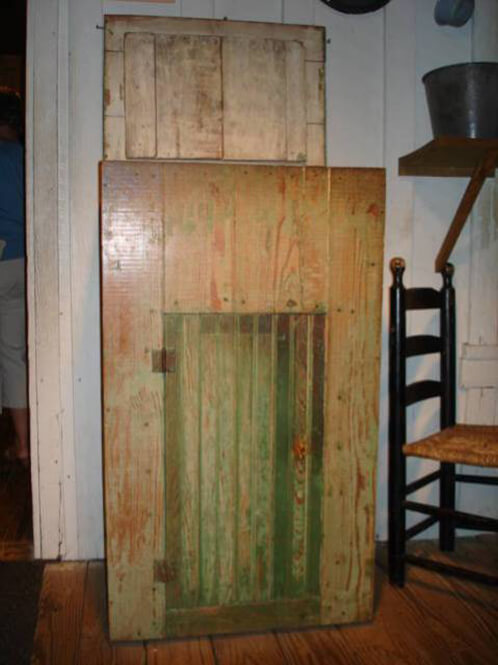This object is a wood and metal icebox that was popular in homes before electricity was widely available. It is currently being exhibited in the sharecropper’s cabin in the museum. Iceboxes were developed and used before modern day refrigerators, and were designed to preserve foods.
Basic iceboxes were made of wooden frames, and had a gap on the inside, with a smaller metal lining. The iceboxes had separate drawers and shelves to store different types of foods. Ice would be packed in the space between the wood and metal, and then insulated with straw, sawdust, seaweed, or cork. Cheaper versions would just have a drip pan underneath to catch the melting ice, but fancier models would have a container that caught the water, and a faucet to drain it.
Every year when the weather turned warm, ice was delivered daily to homes by the iceman. The iceman would drive from home to home, on a wagon lined with straw and full of ice blocks. For each home, he would chip off pieces of ice for the icebox, and for an additional fee, he would insert the ice into the icebox for the homeowners. During the summer months, kids would hitch a ride on the wagon of ice, or chip off small pieces of ice as a treat. Icemen worked for ice houses, which stored ice year round. Every winter, ice was harvested from frozen lakes and stored in ice houses. Ice harvesting and storage became a huge trade for states in New England, with many people becoming rich from shipping ice to the Southern states and the Caribbean.
However, ice houses were around long before the dawn of the icebox. Records dating back to 1780 BC talk about construction of an icehouse in Mesopotamia. Starting as dug out pits lined with straw, ice houses evolved around the world over the years, into everything from brick buildings to underground tunnels. By 1930, electric refrigerators like we use now began replacing the old iceboxes. As the need for ice delivery declined, so did the business of ice houses. By 1960, ice houses no longer served a purpose, and most were closed. In Texas however, ice houses were more innovative and started selling groceries and beer. They became gathering spots for people to get together and relax. The national convenience store 7-Eleven developed from ice houses that were operated by Southland Ice Company in Dallas and San Antonio in the 1930s.
Though it’s easy to take ice for granted today, many things around us are reminders of our modern innovations. Modern refrigerators still contain many elements of original iceboxes, such as shelving and drawers; and every time we pass a convenience store- it sits as a reminder of a bygone era, when ice houses served an exclusive purpose, still present in the bags of ice sold there.
